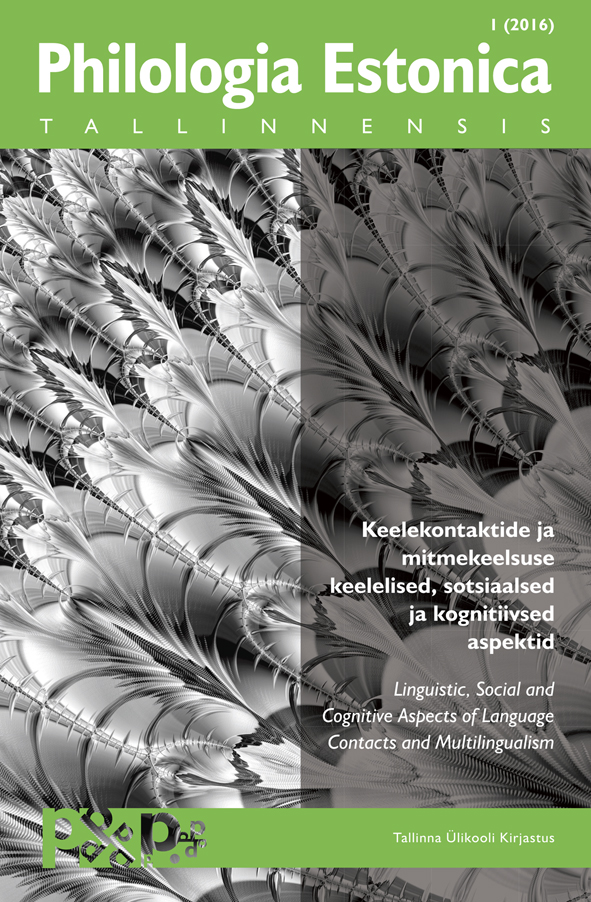Eesti-soome koodivahetuse mitu nägu Facebooki vestluste näitel
The multiple faces of Estonian-Finnish code-switching seen from Facebook conversations
Author(s): Kristiina PraakliSubject(s): Language and Literature Studies, Communication studies, Lexis, Comparative Linguistics, Finno-Ugrian studies
Published by: Tallinna Ülikooli Kirjastus
Summary/Abstract: The contemporary trans-border world has drastically changed our understanding of communication and socialization. Language environments have expanded into the virtual spheres and the major share of communication is performed on the Web. In terms of mobility and, in the first place, transnationalism, this means the substitution of traditional places of socialising (e.g. community evenings, cultural and club activity in native language, etc.), or, at the same time, participating in internet environments. Similarly, the main communication places of Estonian-speakers in Finland are the numerous virtual networks, of which there exist a couple dozen on Facebook, with the biggest comprising approx. 30,000 members. According to Statistics Finland, there are 48,087 people in Finland whose mother tongue is Estonian. In comparison, shortly aft er Estonia gained its independence this figure was 1,394; by the new millennium it had risen to 10,176, climbing further to 28,493 by 2009. The size of the Estonian-speaking population in Finland was impacted by Estonia’s entry into the European Union in 2004 and the state of the Estonian labour market. The present article concerns itself with code-switching functions in written communication in a Facebook group produced by Estonian-speakers in Finland. Th e data include postings of the group members during the period June 2015 to April 2016. The data are comprised of 421 texts. Th e group surveyed includes young adults, most of whom speak Estonian as their mother tongue, and many also speak Russian or Finnish. Although the background of the group studied is largely heterogeneous, they are, however, united. The multiple faces of Estonian-Finnish code-switching seen by their shared experiences in recent years and a common language and cultural background. Their initial contacts with the Finnish language mainly occurred in adulthood; therefore, their Finnish language skills are asymmetric. Based on the results of this study on code-switching in written communication, one may make the following conclusions: The use of Finnish in conversations include functionality, references to the conversation’s context, being speaker’s identity marker and, furthermore, a marker of intragroup boundaries. In multi-language communication situations, code-switching acts as a device which carries, transfers, produces and reproduces meaning. At the same time, code-switching means speaking in many voices, whereby the different speakers’ cultural-language experiences converge. In the case of the respondents one may say that their code-switching is an accepted mode of linguistic behaviour, and the use of code-switching is a norm, even in situations where the speaker(s) in question has/have only minimal knowledge of Finnish. On the other hand, there is a noticeable variation in the written communication of the informants, and the use of the Finnish language is one means for the group members to position themselves and demonstrate their status. It may also be viewed as an apparatus of power, as well as a means to distinguish themselves from the Estonian-speakers who reside on the other side of the Gulf of Finland).
Journal: Philologia Estonica Tallinnensis
- Issue Year: 1/2016
- Issue No: 1
- Page Range: 126-151
- Page Count: 26
- Language: Estonian

